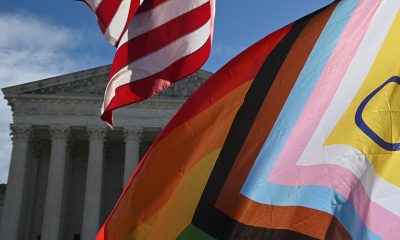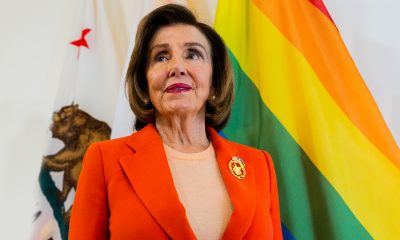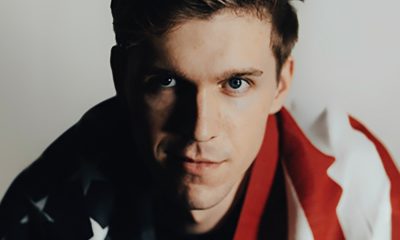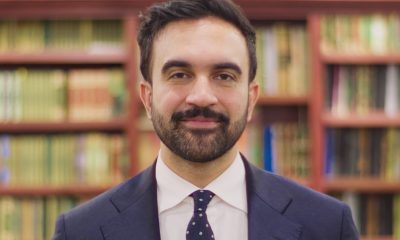Living
Gay, bi men remain key to HIV epidemic
After 30 years of AIDS, many breakthroughs but infection rates on the rise
On June 5, 1981, the U.S. Centers for Disease Control and Prevention published an article in its authoritative journal Morbidity and Mortality Weekly report that experts now consider the first signal that an unprecedented worldwide epidemic had begun.
“In the period of October 1980-May 1981, 5 young men, all active homosexuals, were treated for biopsy-confirmed Pneumocystis carini pneumonia at 3 different hospitals in Los Angeles, California. Two of the patients died,” the MMWR article stated.
“Pneumocystis pneumonia in the United States is almost exclusively limited to severely immunosuppressed patients,” said the article. “The occurrence of pneumocytosis in these 5 previously healthy individuals without a clinically apparent underlying immunodeficiency is unusual.”
It would take another few years before scientists named the condition detected in the men discussed in that MMWR article as Acquired Immune Deficiency Syndrome or AIDS. The name AIDS followed an earlier term used by some researchers and the media – Gay Related Immune Disorder or GRID.
In reflecting on the tumultuous developments surrounding AIDS over the past 30 years, leaders of AIDS advocacy organizations and LGBT activists in the U.S. who lived through the early years of the epidemic say that, to some extent, the MMWR article of June 1981 still has considerable resonance for gay men.
They acknowledge that so much has changed for the better over the past 30 years, including breakthroughs in biomedical research resulting in highly effective drugs that transformed AIDS from a death sentence into a manageable, chronic illness like diabetes.
But AIDS activists also point out that HIV and AIDS continue to disproportionately impact gay men or men who have sex with men (MSM) in the United States and other countries.
And although the perception of AIDS as a “gay disease” has largely receded from the minds of most Americans, AIDS activists say they find themselves in the ironic position of having to remind Congress and state and local governments that more resources and funding are needed for HIV prevention programs targeting gay and bisexual men.
“MSM is the only group for whom, according to the CDC, new infections are still increasing,” said Ronald Johnson, vice president for policy and advocacy for AIDS United, a national group formerly known as AIDS Action.
“So there continues to be a concern that there is not enough targeted prevention resources to MSM, particularly MSM of color and young MSM of all races and ethnicities,” Johnson said.
According to the CDC, while MSM account for about 2 percent of the U.S. population, more than half of all new HIV infections in the U.S. each year (53 percent) occur among MSM. CDC data also show that MSM make up nearly half of all people living with HIV in the U.S. – 48 percent.
CDC figures show that white MSM “account for the largest number of annual new HIV infections of any group in the U.S., followed closely by black MSM,” according to a CDC fact sheet released last month.
“There are more new HIV infections among young black MSM (aged 13-29) than among any other age and racial group of MSM,” the fact sheet says.
The Obama administration, with input from AIDS advocacy organizations, released a National HIV/AIDS Strategy document in July 2010 that, among other things, calls for an aggressive effort to develop better HIV prevention programs targeting MSM.
Johnson and Carl Schmid, deputy executive director of the AIDS Institute, a national advocacy group, praised the administration for developing the strategy document, which they say covers most of the bases needed for addressing HIV prevention programs for MSM.
But the two said the proposals in the strategy document have yet to be fully implemented. They note that delays in its implementation are due, in part, to the U.S. economic situation that has prevented needed increases in federal AIDS funds and severe cutbacks in state and local funding for AIDS-related programs.
Phill Wilson, president and CEO of the Black AIDS Institute, said in a commentary last week in the Washington Informer, a black community newspaper, that he fears the horrors of the AIDS epidemic of the 1980s, when friends and family members watched loved ones die due to a lack of effective medical treatment, could return to some degree in the next few years.
According to Wilson, if the federal government fails to boost funding for the federal-state AIDS Drug Assistance Program (ADAP), low income people who rely on the program to provide them the medications they need keep the AIDS virus in check could become casualties just as their predecessors became casualties years earlier. But this time, he said, an inability to gain access to medicine due to funding shortfalls would be responsible for their fate at a time when effective medicine is readily available.
He called such an outcome “immoral.”
The ADAP program was created under the Ryan White AIDS Care Act to provide life-sustaining drugs for low-income people with HIV and AIDS who are under insured or don’t have any health insurance to help pay for the drugs.
ADAP funding cuts by states and a large increase in the number of people applying for ADAP assistance has resulted in nearly 8,000 people being placed on state waiting lists for the AIDS drugs they need to remain healthy.
The health insurance reform law that President Obama proposed and Congress passed two years ago was expected to relieve the ADAP funding pressure on states when it takes effect in 2014. However, some states that oppose the law have filed lawsuits seeking to prevent its provision requiring all citizens to buy some form of health insurance from going into effect, making its outcome uncertain.
Nearly all AIDS advocacy groups support the law, saying it would strengthen medical care for large numbers of people with HIV/AIDS.
Dr. Anthony Fauci, director of the National Institute of Allergy and Infectious Diseases, an arm of the U.S. National Institutes of Health, has been the leading federal government official monitoring the AIDS epidemic and directing AIDS-related research since the disease burst on the scene in 1981.
In a speech commemorating the 30th anniversary of AIDS at NIH headquarters in Rockville, Md., on Tuesday, Fauci said he’s optimistic that an AIDS vaccine can be developed in the near future.
“We have scientific evidence that a safe and effective HIV vaccine is possible,” he said in a statement released on May 18.
“In 2009, a clinical trial in Thailand involving 16,000 people demonstrated for the first time that a vaccine could safely prevent HIV infection in a modest proportion of study participants,” he said. “Many of the best minds in HIV vaccine science are examining blood samples and data from the Thai trial to learn how the vaccine candidate prevented HIV infections and to consider how it could be modified to be more effective.”
Fauci said NIAID is also optimistic about development within the next few years of effective vaginal and rectal microbicides that can be used to prevent the transmission of HIV during sexual contact.
Fauci and other researchers have also pointed to studies showing the effectiveness to a certain degree of prescribing HIV drugs for use by non-infected people believed to be at high risk for HIV infection, such as men who have sex with men.
Known as pre-exposure prophylaxis, or PrEP, the use of this prevention measure is said to have the drawback of being less effective if people fail to take the drug as required. Some also have expressed concern that people using this prevention method are subject to potential side effects of the drugs and may be discouraged from using condoms, which experts say is one of the most effective methods of HIV prevention.
Events and developments in the early years of AIDS
• 1981: The CDC reports in its June 1981 edition of MMWR and subsequent editions that year that an estimated 170 gay men had succumbed to Pneumocystis carini pneumonia and Kaposi’s sarcoma, a rare skin cancer, over the preceding two years. The CDC studies of these cases cited a serious malfunctioning of the body’s immune system in those who contracted the conditions.
• 1982: Gay Related Immune Disorder, or GRID, became the first name to describe what is now known as AIDS. Cases reached epidemic proportions in the U.S., moving beyond clusters of gay men in New York, San Francisco and Los Angeles and into groups with no obvious risk factors.
• 1983: Gay leaders, independent medical researchers and health and social services agency officials testify before a congressional committee that the federal response to AIDS was highly inadequate. They issue a plea for the federal government and the Reagan administration to increase federal funding and federal initiatives to fight AIDS.
• 1985: In late July, actor Rock Hudson stunned the nation when he issued a statement saying he had AIDS and was receiving treatment in Paris that he said he couldn’t get in the U.S. He died three months later at age 59. His announcement and death drew massive mainstream media attention to AIDS. His death prompted his close friend, actress Elizabeth Taylor, to help found the American Foundation for AIDS Research to raise funds for AIDS causes.
• 1988: The NAMES Project AIDS Memorial Quilt makes its second trip to Washington in the spring, where it’s displayed on the Ellipse near the White House. Later that year, about 1,100 AIDS activists staged a protest at the headquarters of the U.S. Food and Drug Administration in suburban Maryland outside D.C., denouncing the FDA for taking too long to approve new drugs for people with AIDS. Police arrested at least 176 of the protesters after they blocked access to the FDA building’s main entrance.
Real Estate
Real terrors of homeownership come from neglect, not ghosts
Mold, termites, frayed wires scarier than any poltergeist
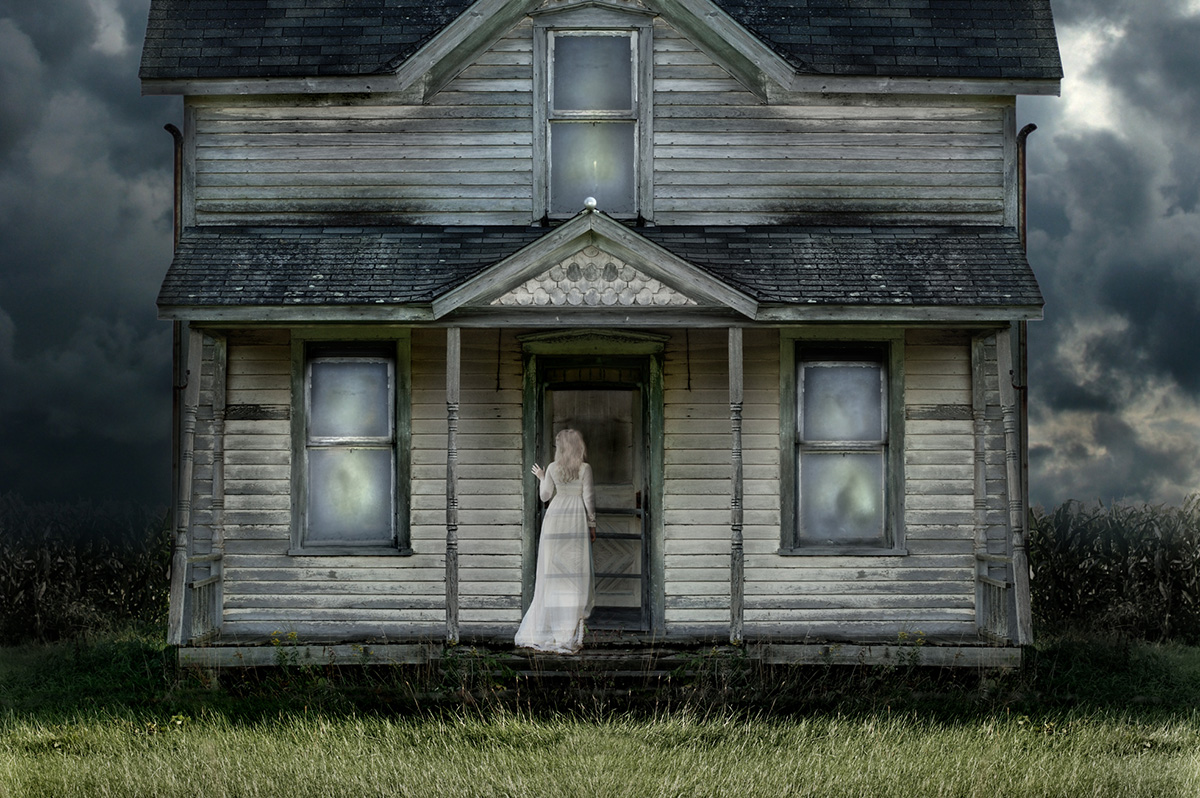
Each October, we decorate our homes with cobwebs, skeletons, and flickering jack-o’-lanterns to create that spooky Halloween atmosphere. But for anyone who’s ever been through a home inspection there’s no need for fake scares. Homes can hide terrors that send chills down your spine any time of year. From ghostly noises in the attic to toxic monsters in the basement, here are some of the eeriest (but real) things inspectors and homeowners discover.
Every haunted house movie starts with a creepy basement, and in real life, it’s often just as menacing. Mold, mildew, and hidden water leaks lurk down there like invisible phantoms. At first, it’s just a musty smell — something you might brush off as “old house syndrome,” but soon enough, you realize those black or green patches creeping along the walls can be more sinister than any poltergeist.
Black mold (Stachybotrys chartarum) is particularly fearsome – it thrives in damp, dark places and can cause serious respiratory problems. It’s not just gross – it’s toxic and, while some types of mold can be easily cleaned up, removing black mold can cost more than an exorcism.
Have you ever heard strange buzzing or seen flickering lights that seem to move on their own? Before you call the Ghostbusters, call an electrician. Faulty wiring, outdated panels, and aluminum circuits from the mid-20th century are the true villains behind many mysterious house fires. Home inspectors can also find open junction boxes, frayed wires stuffed behind walls, or overloaded breaker panels that hum like a restless spirit.
Imagine an invisible specter floating through your home – something that’s been there since the 1950s, waiting for you to disturb it. That’s asbestos. Home inspectors dread discovering asbestos insulation around old boilers or wrapped around ductwork. It’s often lurking in popcorn ceilings, floor tiles, and even wall plaster. You can’t see it, smell it, or feel it—but inhaling those microscopic fibers can lead to serious illness decades later.
Lead pipes, once thought to be durable and reliable, are like the vampires of your water system – quietly poisoning what sustains you. The results of a lead test can be chilling: even a small amount of lead exposure is dangerous, particularly for children.
And it’s not just pipes – lead paint is another problem that refuses to die. You might find it sealed beneath layers of newer paint, biding its time until it chips or flakes away. This is why, when selling a property built prior to 1978, homeowners must disclose any knowledge of lead paint in the home and provide any records they may have of its presence or abatement.
Scratching in the walls. Tiny footsteps overhead. Droppings in the attic. It’s not a poltergeist – it’s pests. Termites, rats, bats, carpenter ants, and even raccoons can do more damage than any ghost ever could.
Termites are the silent assassins of the home world, chewing through beams and joists until the structure itself starts to sag. Rats and mice leave behind droppings that can spread disease and contaminate food. Bats are federally protected, meaning your haunted attic guests can’t just be evicted without proper precautions. And I once had a raccoon give birth in my chimney flue; my dogs went crazy.
Ever step into a home and feel the floors tilt under your feet? That’s no ghostly illusion – it’s the foundation shifting beneath you. Cracked walls, doors that won’t close, and windows that rattle in their frames are the architectural equivalent of a horror movie scream.
Foundation damage can come from settling soil, poor drainage, or tree roots rising from under the structure. In extreme cases, inspectors find entire crawl spaces flooded, joists eaten by rot, or support beams cracked like brittle bones. Repair costs can be monstrous – and if left unchecked, the whole house could become a haunted ruin.
Some homes hold more than just physical scares. Behind the drywall or under the floorboards, inspectors may uncover personal relics – old letters, photographs, even hidden safes or forgotten rooms. Occasionally, however, there are stranger finds: jars of preserved “specimens,” taxidermy gone wrong, or mysterious symbols scrawled in attic spaces.
These discoveries tell stories of the people who lived there before, sometimes fascinating, sometimes chilling, but they all add to the eerie charm of an old home, reminding us that every house has a history — and some histories don’t like to stay buried.
So, while haunted houses may be a Halloween fantasy, the real terrors in homeownership come from neglect, not ghosts. Regular inspections, good maintenance, and modern updates are the garlic and holy water that turn a trick of a home into a treat.
Valerie M. Blake is a licensed associate broker in D.C., Maryland, and Virginia with RLAH @properties. Call or text her at 202-246-8602, email her via DCHomeQuest.com, or follow her on Facebook at TheRealst8ofAffairs.
Advice
Sexual desire is waning, should we open our relationship?
Couple faces difficult choices after seven years

Dear Michael,
When I met my husband seven years ago, I was super attracted to him and we had a really hot sex life.
That feeling has been waning for a while and now I am just not feeling it.
I know that people get older, gain weight, get less attractive over time but that’s not the case here. Ben is as good looking as ever. But I have little desire to have sex with him.
It bothers me that I don’t really want to have sex with the guy I love and want to spend the rest of my life with.
Is this why everyone else I know has an open relationship? Is there something I can do to want to have sex with my husband again?
This is causing major problems in my marriage. I don’t initiate anymore and half the time I find an excuse to not have sex when Ben initiates. He knows something is up but I usually blame it on work stress or not feeling well. I don’t want to hurt his feelings.
Aside from this, I love Ben and we have a lot of fun together. We’re very close, talk about all sorts of stuff, but not this.
Michael replies:
Pretty much everyone in a long-term relationship has to deal with decreased desire at some point.
Sex changes after you’ve been with your partner for a while. Sex is not going to be as easy, hot, and irresistible as it was at the beginning of the relationship. Newness generates a lot of the sexual heat at the outset of a relationship, and when the newness is gone, you don’t easily feel the same sizzling excitement that you felt when you first met.
Unfortunately, the kind of sex that people have at the beginning of a relationship is totally glorified in our culture as the gold standard of sex.
I say “unfortunately” because it’s not possible to consistently have the hot sex of a new relationship, ongoing, with a long-term partner. So if you think that is the best or only kind of sex to have, you will be contemptuous of anything else, and you will be disappointed in your sex life with your partner as time marches on.
But the sizzling sex people have at the start of a relationship is just one way to have sex. If you are willing to be imaginative, and are open to change, there are many other kinds of sex that can be wonderful.
How about sex for emotional connection? Sex for physical closeness? Sex for romance? Sex to celebrate just being together?
So, consider changing (not lowering!) your expectations. Rather than sulking or moping that you don’t want to spontaneously jump Ben’s bones, be open to having sex with your husband that is based more on your relationship and on your love for each other.
Now, here’s a whole other angle to consider: While the excitement of a new partner often fades, there are still ways to generate excitement and passion in a long-term relationship by taking risks and revealing yourself more deeply. Stick with me and I’ll explain.
- You haven’t said anything to Ben about your waning interest. I encourage you to re-think this. You would be much better positioned to tackle this issue collaboratively. Not talking about how stuck you feel is likely to deepen your feeling of shame and fear that something is wrong. Speaking with Ben about what is actually a fairly common couples’ issue could be a relief.
- Ironic as this may seem, the closer two people are, the less comfortable they may be being frankly sexual with each other. Clients often tell me that they are more comfortable expressing their real desires to someone they hardly know (or don’t know at all) than to their significant other. For one thing, the more your partner means to you, the more you may fear rejection if you reveal sexual feelings and desires that might upset or even shock your partner. For another, as couples get closer, sex may start to feel like too much closeness, and avoiding sex may be a way to create some space.
Not speaking up about what is important keeps you distant from your partner and drains your relationship of vitality. A powerful antidote to this: work toward becoming a person who can take risks, tolerate discomfort and uncertainty, and be able stand on your own when you don’t get your partner’s validation.
Talking with Ben, whether it’s about your lack of spontaneous desire for sex, or about sexual interests you may be keeping from him for fear of judgment, would involve your making uncomfortable moves that might lead to Ben’s judgment or even rejection. But doing so would also, of course, allow the possibility of more happening between you sexually. It would also let Ben know you better, thereby deepening the level of intimacy in your relationship. Making these moves could also be inherently exciting, which —guess what—could help to shake you out of your sexual doldrums and bring more passion and life into your relationship.
Similarly, you might start initiating. Even if you’re afraid it won’t go well and even if you’re not feeling it. That is the only way you are going to figure out how to have satisfying long-term sex. Take the need for an erection or orgasm off the table. Sex with your partner should not be a performance. Go for closeness, connection, and what feels good. And challenge yourself to go places that you are uncomfortable about going.
If any of this intrigues you, “Passionate Marriage” and “Intimacy and Desire,” both by David Schnarch, explore how your sexual connection can deepen over time in a long-term relationship.
Finally, with regard to your considering an open relationship as a remedy: Do you think that would enhance the sexual connection between you and Ben?
Michael Radkowsky, Psy.D. is a licensed psychologist who works with couples and individuals in D.C. He can be found online at michaelradkowsky.com. All identifying information has been changed for reasons of confidentiality. Have a question? Send it to [email protected].
Wedding Announcement
Douglas M. Haller and Timothy H. Longnecker wed in Detroit, Michigan
Couple weds in Detroit, Michigan

Douglas M. Haller and Timothy H. Longnecker were married on September 15, 2025 in Detroit’s gay-welcoming suburb Ferndale after 11 years as domestic partners in Midtown Detroit. Julia Music, coordinator of LGBTQ Pride celebrations in Ferndale, served as officiant.
The couple sang stanzas of the 1927 song “Side By Side” as their vows, concluding with an AI Gay Wedding Pledge: “to be Allies pursuing happiness, equality and shared dreams.”
The couples’ families hail from Detroit’s Old Redford neighborhood; Douglas is Irish and French-Canadian, Timothy is German and English. DNA testing confirmed to the couple that each shares substantial ancestry from Ostrobothnia, Finland.
Douglas began his advocacy as a gay cultural and political activist in 1971 by coming out in the disco dance scene of Detroit’s Gay Palmer Park neighborhood. In Washington, D.C. after 1974, he was an interior designer at Georgetown’s Little Caledonia boutique. Douglas became the co-owner of Hermes Antiques with Helen Coutts, a retired English Literature teacher from Redford H.S. On S St. at Connecticut Ave., D.C.’s first Pride celebrations were held in front of their shop, alongside Lambda Rising bookstore. Following victimization in an anti-gay hate attack, Douglas became the public awareness coordinator of the Gay Activists Alliance, and was the principal organizer of its Anita Bryant demonstration at Dupont Circle.
Returning to Detroit in 1979, Douglas achieved an M.A. in Ancient History & Archival Administration at Wayne State University (WSU), studying under Finley Hooper & Philip Mason; his Master’s Essay re: an American Labor Movement cartoonist, utilizing the Walter Reuther Library’s archives. His WSU 1973 B.A. included American Political/ Diplomatic History, & Interdisciplinary Studies. During 1979-82 he was Information Officer of ASP (Assoc. of Suburban People)— Metro Detroit’s largest gay and lesbian social and political organization.
Douglas relocated toSan Francisco in 1982. He was Curator of Photographs at California Historical Society Libraries in Pacific Heights and Los Angeles. Living in the Mission & Haight, he was active in Castro and South-of-Market gay life, just as the HIV/AIDS epidemic first appeared.
In 1986 Douglas relocated to Philadelphia, as Head Archivist of the University of Pennsylvania Museum of Archaeology/Anthropology; authoring an illustrated book on Maison Bonfils, 19th-century French photographers of the Near East. Douglas was Founding Archivist of Penguin Place, now Philadelphia’s William Way LGBT+ Community Center. He became a Charter Member, Academy of Certified Archivists; and Founding Member, Lesbian/ Gay Archives Roundtable, Soc. of American Archivists (Chicago).
Returning to WSU’s Reuther Library (1998), Douglas was Coordinator of Audiovisual Collections, & History of Photography Instructor. Following 9/11 Attacks (2001), he relocated to New Orleans as Head Curator of Louisiana State Museums. Later owning the Gay-welcoming Creole Inn B&B in the Marigny (nr the French Quarter), with his finger on the pulse of Nawlins’ Gaylife—until Hurricane Katrina (2005). GLBT+ neighborhoods weren’t inundated—becoming lively islands amidst destruction. Douglas returned to Detroit in 2008 as caregiver for his mother, Jeanette Kalahar (Haller) Marchand, formerly a radio singer in 1940s Detroit. He met Timothy in 2014.
Timothy achieved a 1991 MBA in Finance & 1985 BS in Management Information Systems from the Univ. of Michigan-Ann Arbor. During 30 years, he held Information Technology & Automotive Business positions in Metro Detroit & LA, including Partner at Deloitte & Touche, Ford Motor & IBM. As a Consultant, his work involved extensive travel in North America, Europe & Asia. He has two married daughters from a previous marriage, a Pediatric Cardiology Nurse Practitioner & a Recruiting Executive for Automotive Technology clients, both living in Metro Detroit. As their final project before retirement, Timothy & Douglas worked as Archivist & Technology Consultant for Detroit educators Harriet (Choreographer) & Irving (Sculptor) Berg. Harriet acted as a godmother during their early relationship & they assisted in caregiving during her final years.
Timothy and Douglas spend their retirement in a 1905 apartment near the Detroit Institute of Arts’ exhibits, films and concerts, enjoying ethnic restaurants, and traveling. In 2025 they went by train to experience the “First Homosexuals 1869-1939” exhibition in Chicago. The curator of the exhibition, Jonathan Katz, 1976 book “Gay American History”, inspired Douglas to become a gay archivist.
-

 District of Columbia3 days ago
District of Columbia3 days ago‘Sandwich guy’ not guilty in assault case
-

 Sports3 days ago
Sports3 days agoGay speedskater racing toward a more inclusive future in sports
-

 Michigan5 days ago
Michigan5 days agoFBI thwarts Halloween terror plot targeting Mich. LGBTQ bars
-

 New Jersey4 days ago
New Jersey4 days agoBlue wave hits Northeast: Sherrill and Mamdani lead Democratic comeback



